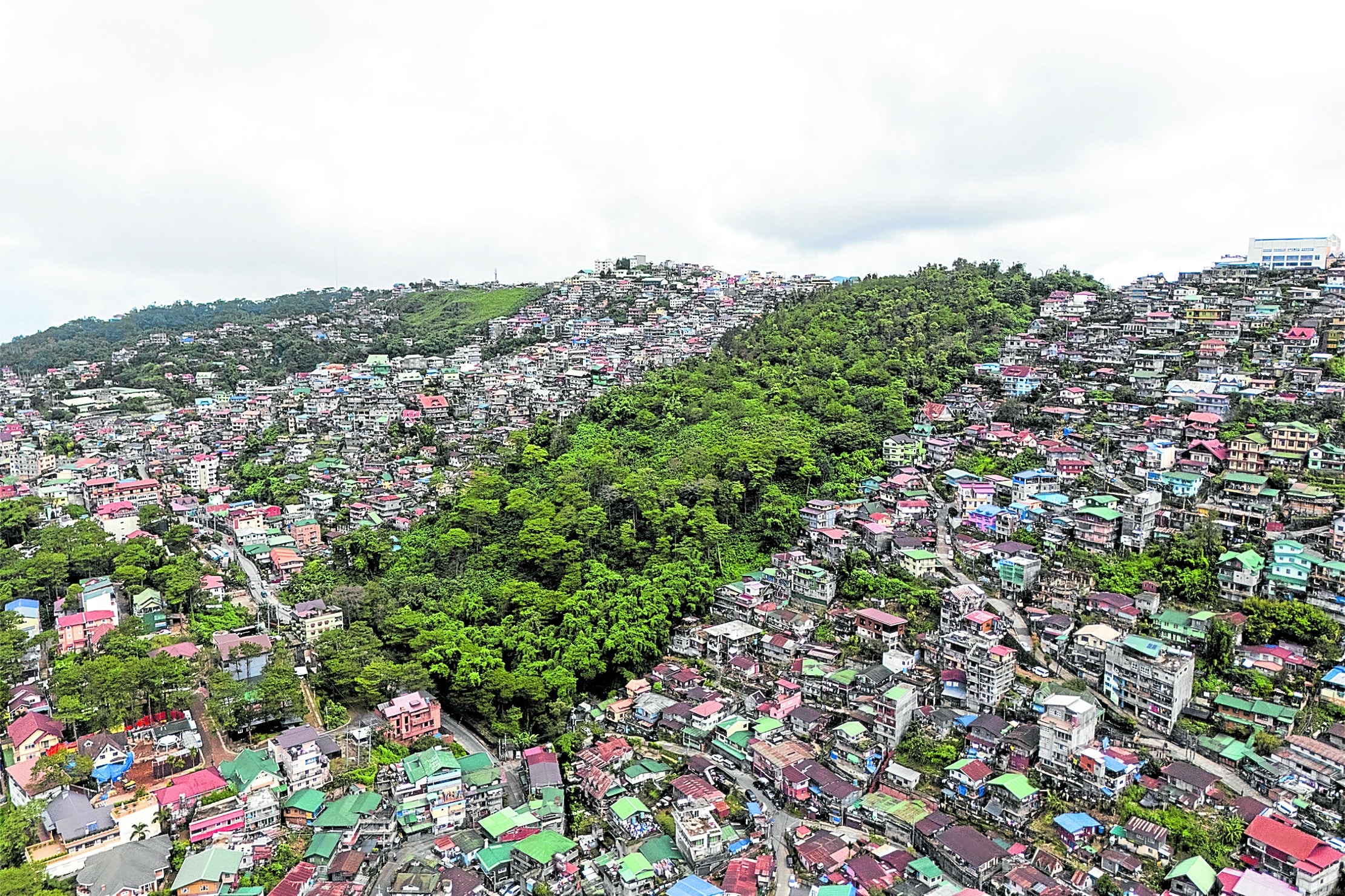Baguio City by 2043: Smart, ‘circular,’ self-reliant

HIGHLAND SPRAWL The country’s summer capital was designed by the American colonial government for 20,000 people, but now is inhabited by over 350,000 residents, climbing to 700,000 on peak days. —Neil Clark Ongchangco
BAGUIO CITY, Philippines — When Baguio’s planning division was renamed the City Planning, Development and Sustainability Office last year, the city government was aiming to set the right tone for the urban renewal of the Philippine summer capital—not just as a smart (or automated) city as initially planned, but also as a green, sustainable, and self-reliant circular economy.
During this year’s Baguio Charter Day program on Sept. 1, Mayor Benjamin Magalong announced that by 2043, the city should have attained full inclusivity, creativity, and “livability,” or a condition when all residents live out their quality existence.
City planner and architect Donna Rimando Tabangin put out a “livability index” last year to determine what the city’s 128 barangays needed, such as oft-neglected necessities like local pharmacies or hardware stores and public parks.
A smart command center housed at the Baguio Convention and Cultural Center already serves as a monitoring hub for health security, law enforcement, and disaster prevention, using street cameras equipped with artificial intelligence and ground sensors to measure seismic activity and geological instability.
READ: Baguio still Cordillera tourism anchor
Article continues after this advertisementCity analysts have been studying data profiles that measure where crimes are concentrated, where infectious outbreaks are likely to occur, how many buildings are in geologically dangerous zones, and which structures have building permits. A digital “twin” of Baguio uses 3D imaging to lay out these profiles on a map, which became useful in combating the coronavirus pandemic.
Article continues after this advertisementNew shape
The reshaping of Baguio began in 2019 when Magalong proceeded to undertake the city’s redevelopment plan upon assuming office. The mayor and his team soon outlined more than 80 “catalytic” projects to improve the mountain resort city, which included a makeover of century-old Burnham Park and the modernization of the city’s outdated sewer system.
While the plan drew backlash from some residents who objected to privatization, the Baguio government also began receiving unsolicited proposals from some of the country’s big developers to construct a new market building and a central public utility service terminal or to enforce a digitally managed traffic system that tracks real-time vehicle flow on each city street and controls public utility vehicle dispatches.
A ticking time bomb has been driving all these plans: urban decay. Experts believe it could happen to Baguio in 2030 unless changes in consumption, migration, infrastructure development, and forest expansion and management are made, as Tabangin pointed out at an Aug. 25 forum that introduced the city’s “circular economy” concept. As a circular economy, Baguio will recycle or repurpose local resources and products to reduce waste.
Baguio was built by the American colonial government in the early 1900s, but acclaimed Chicago architect Daniel Burnham designed it for no more than 20,000 people. The city currently has a population of 366,358, per the 2020 census.
Overcrowding’s immediate impact has been on Baguio’s limited resources, according to a study team commissioned in 2019 to estimate Baguio’s urban carrying capacity (or how a growing Baguio population shares dwindling resources like water, green spaces, or even the use of roads).
Tabangin, a member of the study team, said they discovered that the carrying capacity for Baguio water of 0.15 square meters (sq m) per person per day was breached as early as 2002, while the population exceeded the urban road threshold of 40 sq m per person in 1988. The carrying capacity for green cover (40 sq m per person) was breached only recently, in 2016.
These are problems that civic leaders, teachers, artists, businessmen, social activists, and average residents already identified in 1992 when they sat together to list down how they wanted Baguio to be rebuilt in the aftermath of the destructive July 16, 1990, earthquake. Calling their activity the NGO Congress, the residents set up building height limits and banned gambling to address the city excesses in their day.
‘Waste-to-resource’ program
Measurement has been key to Baguio’s push for overcoming its resource restrictions. For instance, of the 592.6 tons of waste generated in Baguio each day, 30.82 percent (182.61 tons) are actually recyclable, while 35.9 percent (212.73 tons) are biodegradable and can be processed into garden compost and other agricultural products, according to a 2022 waste analysis characterization study.
By 2032, the city could be generating as much as 598.42 tons per day. Baguio had tried to develop waste-to-energy projects to deal with its trash, but Magalong this year abandoned the technology in favor of a “waste-to-resource” program that aims to reduce Baguio’s per capita waste generation of 0.519 kilos a day.
Technology and innovation are helping the city in other ways. Baguio’s data profiles have uncovered population centers that are “economically vulnerable” by studying unemployment rates and literacy rates. Food security is also being tackled by the city’s data-driven programs. Baguio is also constructing the Luna Terraces, a social housing structure that serves as a model for permaculture, with small farms around the building supplying its future residents with food. And the city has been giving incentives to urban farms on its outskirts, to ensure a more self-reliant economy.